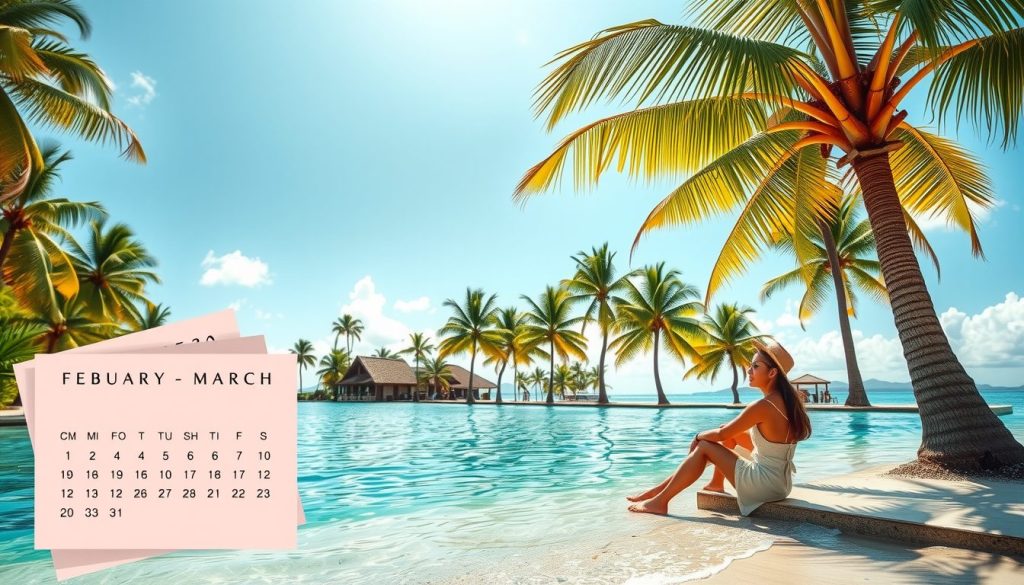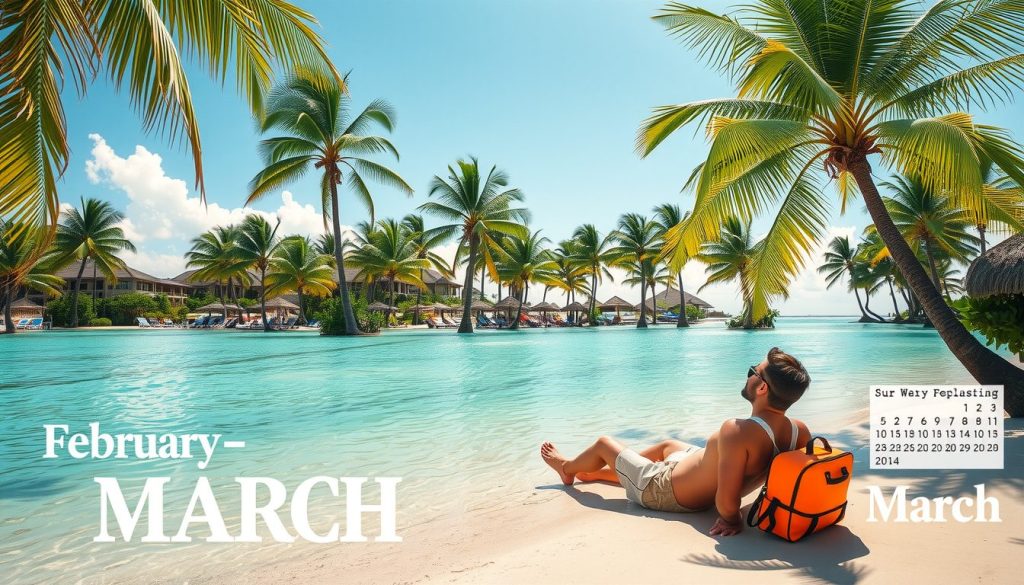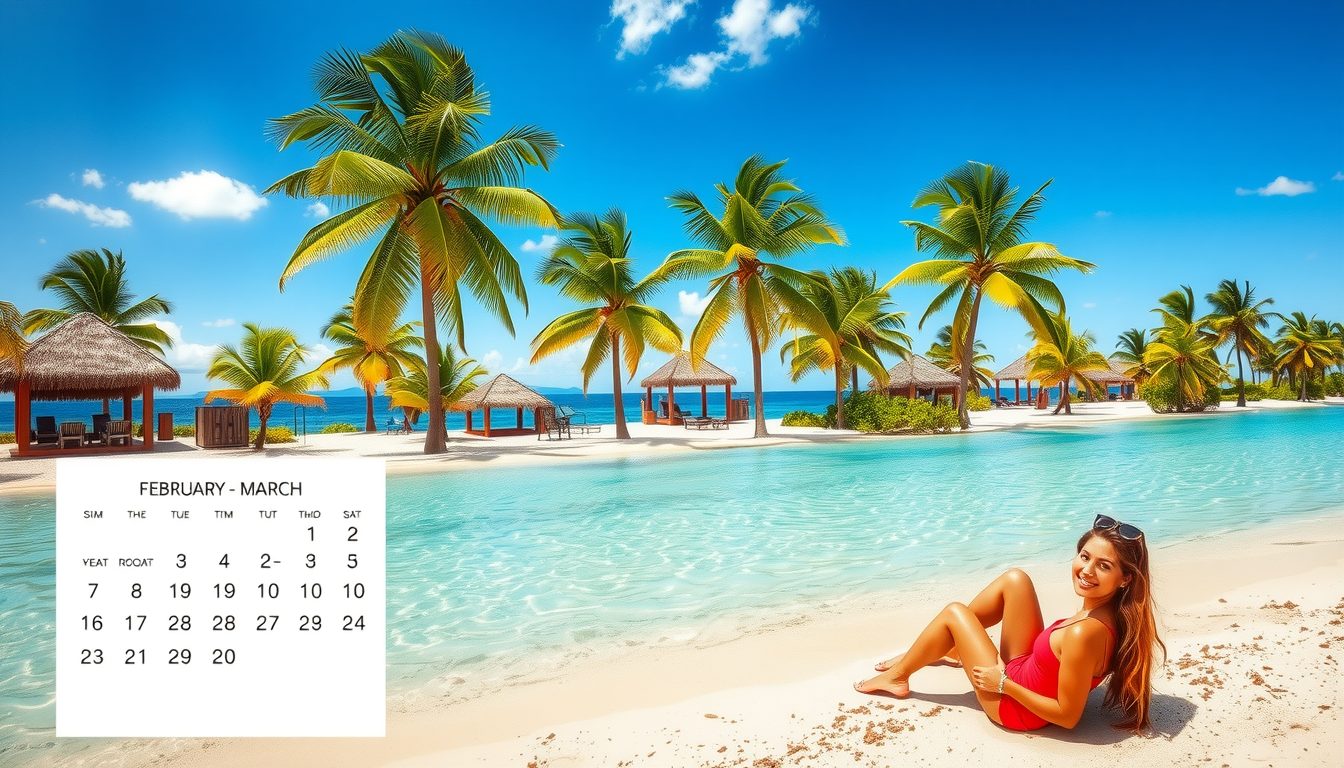Booking a Caribbean resort should feel like anticipation, not anxiety.
Hurricanes are real—but so are the strategies that protect your trip and your wallet.
By timing your booking wisely, choosing storm-safe islands, and layering in targeted travel insurance, you can avoid disruption entirely.
This guide shows how to travel confidently, even when the forecast shifts.
Why Timing Matters for Hurricane Avoidance
Timing is the single most important factor in avoiding hurricanes when booking a Caribbean resort.
The official Atlantic hurricane season runs from June 1 through November 30, with peak activity in August, September, and October.
These months bring the highest probability of tropical storms, which can cause flight cancellations, resort closures, and widespread disruptions.
By contrast, the dry season from December through April offers stable weather, calm seas, and minimal storm activity.
Travelers who book in this window can focus on enjoying their vacation rather than monitoring forecasts.
For example, a February honeymoon in St. Lucia is almost guaranteed to deliver sunny skies and smooth sailing, while a September trip to the same island carries a measurable risk of disruption.
- Safest window: December–April (dry season, low storm risk)
- Peak storm months: August–October (highest disruption probability)
- Budget‑friendly shoulder: Late November and early May (value with manageable risk)

Hurricane‑Safe Islands to Book with Confidence
Geography matters as much as timing.
Not all Caribbean islands are equally exposed to hurricanes.
Some sit outside the main hurricane belt, making them reliable choices even during the summer and fall.
The ABC Islands — Aruba, Bonaire, and Curaçao — are located far south near Venezuela and rarely experience hurricanes. Trinidad & Tobago also sits below the belt, offering consistent weather year‑round.
Barbados, while technically within the belt, has historically seen fewer severe impacts than northern islands.
Choosing one of these destinations allows you to book confidently, even if your travel dates fall in July or September.
For instance, a family vacation in Aruba in August is far less risky than a similar trip to the Bahamas at the same time.
- Aruba, Bonaire, Curaçao: Rarely affected; strong resort infrastructure
- Trinidad & Tobago: Below the belt; consistent climate; cultural depth
- Barbados: Lower storm frequency; diverse resort options
Providers and Coverage Fit for a Storm‑Proof Booking
Even with smart timing and destination choices, disruptions can still occur.
That’s why travel insurance is essential.
The right coverage transforms potential chaos into manageable steps.
Four provider categories cover the most common risks: resort closures, medical emergencies, trip delays, and airline disruptions.
Each module below explains why it fits, what to look for, and how it works in practice.
VisitorsCoverage — Resort Closure and Prepaid Protection
- Why it fits: Protects prepaid nights if a resort closes due to weather or infrastructure issues.
- Decision filters: Look for closure/interruption clauses, per‑night caps, and documentation requirements.
- Scenario flow: Resort closure → call assistance → relocate or refund nights → file claim with receipts.
Ekta — Medical Emergencies and Evacuation
- Why it fits: Covers treatment abroad and coordinates evacuation, critical for island destinations.
- Decision filters: High medical limits, evacuation caps, activity coverage.
- Scenario flow: Injury → hotline → hospital admission with payment guarantee → evacuation if needed.
Insubuy — Trip Delays and Interruptions
- Why it fits: Covers meals, hotels, and rebooking during delays; reimburses unused resort nights.
- Decision filters: Minimum delay hours, per‑day caps, proof requirements.
- Scenario flow: Flight delay → hotel/meals covered → rebook → claim interruption benefits.
Compensair — Airline Disruption Compensation
- Why it fits: Pursues airline payouts for delays and cancellations, complementing insurance.
- Decision filters: Boarding passes, cancellation notices, receipts.
- Scenario flow: Flight canceled → file insurance for immediate costs → submit case → receive airline compensation.

Pivot Your Caribbean Trip Instead of Canceling
Canceling outright isn’t always necessary when forecasts look uncertain.
Smart adjustments can preserve your trip while minimizing risk.
Shifting dates into the dry season, switching to hurricane‑safe islands, or adding Cancel for Any Reason (CFAR) coverage all provide flexibility.
If disruption occurs mid‑trip, interruption benefits refund unused nights and assistance services help relocate you.
For example, a traveler booked for early September in the Bahamas could pivot to Curaçao instead, avoiding storm risk without losing the vacation altogether.
The goal is to maintain control of your time, money, and peace of mind.
- Shift dates: Move into the dry season for stability
- Switch islands: Rebook to ABC or Trinidad & Tobago
- Add CFAR: Retain walk‑away power for non‑covered reasons
- Salvage partials: Use interruption coverage to refund unused nights
Travel Protection in Action
Preparation is only half the equation.
Execution under pressure is where insurance proves its value.
When disruption hits, the fastest path to resolution is calling your insurer’s hotline and following their documented process.
Keep receipts, note times, and secure written confirmations.
These scenarios illustrate how coverage turns stress into steps.
- Flight canceled in Miami: Call insurer before waiting in line. Covered hotel and meals apply; assistance rebooks the next flight.
- Twisted ankle in St. Lucia: Hotline guarantees hospital payment, coordinates care, and arranges evacuation if needed.
- Resort outage in Grenada: Interruption coverage refunds unused nights; assistance relocates you.
- Lost luggage in Aruba: File at airport, call insurer. Essentials reimbursed until bags arrive.
- Passport stolen in the Dominican Republic: Assistance helps replace documents, contact the embassy, and rebook flights.

Real‑World Scenarios
Insurance and timing become real when applied to common Caribbean trips.
These examples show how risk transforms into routine logistics when you book smart and carry protection.
- February honeymoon in Barbados: Dry‑season stability delivers calm seas and uninterrupted resort days.
- April diving in Curaçao: Medical and evacuation coverage provides confidence underwater and on shore.
- December flight delay via Miami: Covered hotel and meals keep the overnight easy; prepaid resort nights remain protected.
- May resort closure near Grenada: Assistance relocates you; unused nights are refunded with proper documentation.
FAQ – Hurricane-Proof Your Caribbean Resort Booking with Confidence
What months are safest to visit the Caribbean?
December through April is the dry season, offering minimal hurricane risk, sunny skies, and calm seas.
This window is ideal for families, couples, and retirees seeking predictable weather.
For example, a March trip to Jamaica almost guarantees uninterrupted beach days.
The trade‑off is higher demand, so book early and secure refundable rates.Are there islands safe from hurricanes year‑round?
December through April is the dry season, offering minimal hurricane risk, sunny skies, and calm seas.
This window is ideal for families, couples, and retirees seeking predictable weather.
For example, a March trip to Jamaica almost guarantees uninterrupted beach days.
The trade‑off is higher demand, so book early and secure refundable rates.Are there islands safe from hurricanes year‑round?
Yes. Aruba, Bonaire, Curaçao, and Trinidad & Tobago sit outside the main hurricane belt.
These destinations provide reliable weather even in July or September.
For instance, Aruba averages only 15 inches of rain annually compared to Puerto Rico’s 50 inches, making it a safe bet year‑round.Is travel insurance still necessary outside hurricane season?
Absolutely. While hurricanes are unlikely in winter, other disruptions remain.
Medical emergencies, flight delays, and resort outages can occur anytime.
Imagine a December flight delay in Miami — insurance covers meals, hotels, and protects prepaid resort nights.When is the cheapest time to visit without high risk?
Late November and early May balance affordability with safety.
These shoulder months offer warm weather, fewer crowds, and lower prices.
A May trip to Barbados, for example, delivers value without the peak storm risk of August.What if I must travel during hurricane season?
Choose southern islands like Aruba or Trinidad & Tobago, book refundable rates, and add CFAR coverage.
This combination ensures flexibility if forecasts shift.
Even a September trip can be managed confidently with these safeguards.
